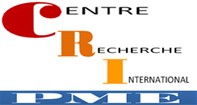Version française / Articles et auteurs / Thèmes
- Libellé inconnu,
Profiles of female leadership. The results of the “she business” project
“Even though progress on equal opportunities is slow, women’s lives are very different in positive ways in 1985, from 20 years before” (Marshall, 1985). Already twenty-five years ago, Marshall pointed out how the role of women in society was changing, highlighting a trend, born in those years, that has never stopped and has come down to our day in continuous evolution...
The woman is the emerging power of the twenty-first century and she is revolutionizing the way of producing wealth globally. The redemption of the female figure from a position of marginality is taking place anywhere in the world. Although a true gender equality has not been achieved yet in any country, significant results have been achieved in many areas of the world (World Economic Forum, 2005).
In Italy, women lead the 25% of businesses. The Observatory on women of UnionCamere indicates that the «pink» firms increased by more than seven thousand units, compared with 2011, and highlights that they record a growth rate of 0.7%, against 0.2% of their male colleagues. The growth of female firms is a common characteristic of all Italian Regions and, mainly, it involves service industry (UnionCamere, 2012). Firms with a high number of female managers and with a strong presence of women show profits almost double respect to a traditional company. Therefore, today women do not appear as vulnerable subjects «to be protected», but they seem ready to lead the challenge of shooting with responsibility and trust. It emerges a picture of a dynamic reality, made up of companies that are born, grow and harden over time. However, the increased presence of women appears to be almost insignificant when compared with the presence of male heads of enterprises. Female quotas are increasing in absolute terms, but it will be some time before it is completely smooth out the gap in participation and representation of women in the labor market, management and governance. According to some authors, this issue makes it necessary the gender research. Indeed, in Italy, there is a persistent marginality (4%) of the role of women in leadership positions (Report on Progress on Equality between Women and Men, 2010). The reasons for this are multiple, related to cultural, social and legal (Greenglass and Marshall, 1993; Davidson and Burke, 1994), but also related to the processes of assessment and recruitment adopted by organizations. Indeed, Alimo-Metcalfe (1993, 1994, 2010), supported by empirical findings, argues that women are already in disadvantage before they enter the enterprise, because the evaluation criteria, the choices of relevant attributes and the selection processes are generally a prerogative of the male. Therefore, the main hamper to the growth and the entry of women in business is the belief that women are not able to occupy certain positions of power, due to their nature, (Acker, 1990; Alvesson and Billing, 1997; Heilman, 2001). This injury prevents them upward mobility (Ely and Padavic, 2007). For this reason, they often have to combat with a hostile work environment (Kossek et al., 2003), that hinders them because of accepted and shared stereotypes (Ely, 1995; Schein, 2001, 2007; Eagly and Carli, 2003).
In spite of this, women has been able to distinguish for the extraordinary creative talent, tenacity and determination, that have led to increasing attention about an economic phenomenon which can help to give concrete answers to the crisis, as moment of rupture compared to traditional cultural models. The woman in the enterprise is a perfect synthesis of elements, which can determine the success of the business, if they are combined and focused properly. In particular, the attention to people, the enhancement of human relationships and their own working group, together with the dedication and determination to carry forward their ideas contribute to the success of the path taken. The woman is extremely flexible, versatile, and multitasking, addicted to run at different aspects of the daily life at the same time. This circumstance makes the woman suitable to work especially in small businesses, where the synthesis of emotional and relational behaviors represents the best way to manage firm and family in a “work&life balance” perspective. Nevertheless, what are the leadership styles adopted by women? How can they be improved? With the aim to answer these questions, the “She Business.
Leadership & Self-empowerment” project was born. The project was carried out in collaboration among University of Salerno, Confindustria Salerno, and Commerce Chamber of Salerno. It investigated the leadership styles adopted by women in Province of Salerno (South Italy). Specifically, the project started from listening to the needs of a wide community of women leaders, and then it has implemented a training program for a select group of them. The participants were involved in 40 hours of experiential learning with the aim to train their soft skills, after which they received their personal and professional profile, drawn by a team of psychologists and experienced trainers. The entire training program allowed to measure the changes recorded by participants in terms of problem solving, organization, leadership, and communication abilities and permitted to define different leadership profiles adoptable by leader women.
Mis à jour le 28 mars 2015
Fichier joint
Auteurs
Associate Professor of Marketing and Corporate Finance – University of Salerno
Rosalia Santulli
PhD in Marketing and Communication – University of Salerno
Giuliana Saccà
Consultant
Francesca Saccà
Cognitive behavioural psycologist - HR performance consultant











